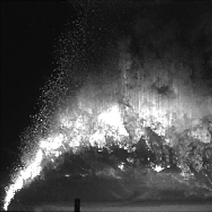
Models for deep sea application of chemical dispersants
A new study that explores various models of oil spill and dispersant projections has been published in Marine Pollution Bulletin. The study, conducted by Texas A&M and others, developed models that tested 14 cases of accidental oil well blowouts. The variables included depth, currents, gas-oil ratios, and subsea injection of chemical dispersants. The models each predicted initial bubble and droplet size distribution as well as nearfield and farfield tracking of oil and gas. The models agreed on certain predictions and disagreed on others. They agreed that droplet sizes are smaller with dispersant and that less oil reaches the surface with dispersant. The authors call for new models, new validation data, and new ways to interpret data to achieve more concrete results. These new models should take multiple subsurface intrusions into account and should study field data rather than just laboratory data.
To read the full article, visit ScienceDirect.


